By Sam McGowan
During the more than half a century since the end of World War II, there has been much speculation about what would have happened if President Harry Truman had not dropped the atomic bomb on Hiroshima and Nagasaki and the invasion of Japan had actually taken place. Until recently, one document had not been available to researchers, the one that tells not what the Japanese military leaders intended to do, but what actually had been done, what was available to defend against the “Kyushu Campaign,” an Allied invasion of the Home Island of Kyushu, and what the actual defenses were.
Immediately after U.S. troops occupied Japan, U.S. intelligence officers began interrogations of Japanese officials. The U.S. Sixth Army G-2 section, including the Marine V Amphibious Force, interrogated the officers of the Japanese Second General Army, the organization responsible for the defense of Kyushu, and its subordinate units, which Sixth Army forces would have fought had the invasion taken place. The report of those interrogations was published on December 31, 1945, but was immediately classified Top Secret and hidden from public view. It remained so for more than a half century. Since 2006 the document has been publicly available through the U.S. Army Combined Arms Research Library at Ft. Leavenworth, Kansas. The information contained in that document provides a much more accurate assessment of what the U.S. Sixth Army would have faced if it had invaded southern Kyushu as planned.
The Ketsu-Go Plan
After U.S. troops invaded the Philippines, the Japanese Imperial High Command debated the Allies’ future actions. Various possibilities were considered—landings on the coast of China, an invasion of Formosa, a landing in Korea, and landings on one of the Japanese Home Islands. Some Japanese officers correctly deduced that the initial landings would most likely be on the southern portion of the island of Kyushu to establish airbases preparatory to a larger movement against Tokyo itself through the Kanto Plain, a deduction that became more likely when U.S. troops invaded the Ryukyu Islands in April 1945.
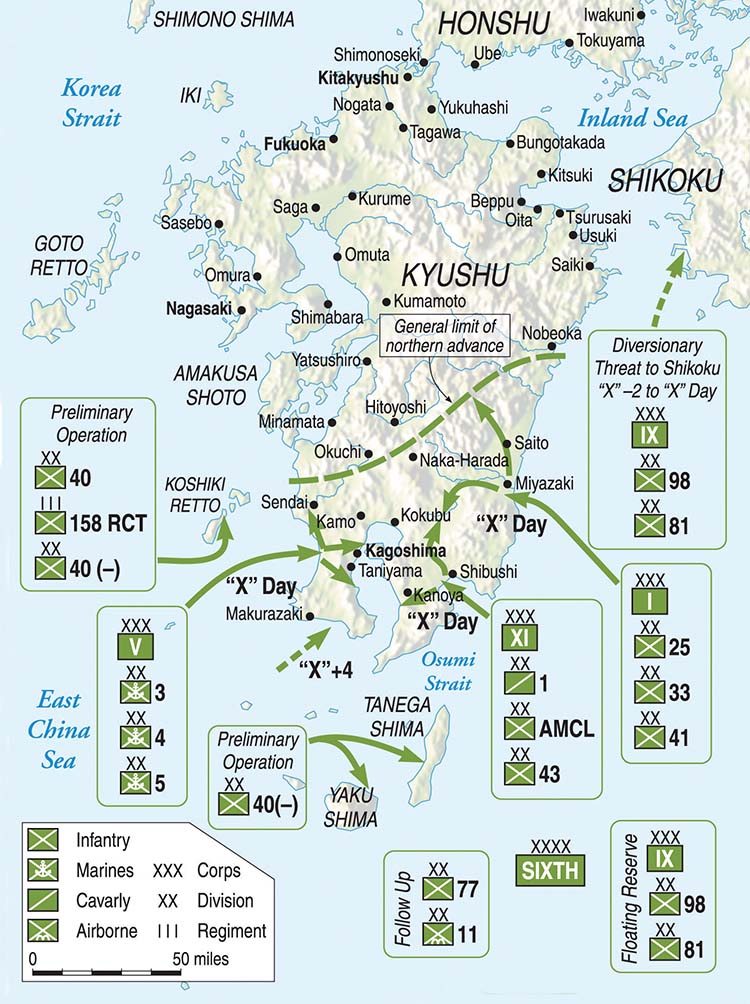
The Ketsu-Go plan was drawn up to meet that eventuality. The plan for the defense of the homeland against invasion was developed in early 1945 and approved by the Imperial High Command in March. It was designed to defeat an Allied invasion fleet as far from Japan as possible, and if any troops actually reached Japanese shores, they were to be annihilated on the beaches. Ketsu-Go called for thousands of special attack aircraft (kamikaze) to be hurled at an invading fleet while it was still at sea, and instructions were given to convert the nation’s remaining aircraft for “crash-landing” operations.
The Imperial Navy would sortie and engage the enemy fleet at sea. Should the approaching enemy continue, it would be attacked by thousands of smaller suicide ships and submarines as it approached Kyushu and by small boats laden with explosives after it anchored offshore. The combination of suicide air attack and naval action would concentrate on the troop transports and was expected to extract a horrible toll before the invading troops even reached shore and, if everything went as planned, would cause the enemy fleet to withdraw. Although the Imperial High Command realized that Japan could not win the war, it hoped that by defeating an invasion fleet, Japan would be able to secure a negotiated peace that would avoid the unconditional surrender demands put forth by U.S. President Franklin D. Roosevelt following the Casablanca Conference. But Japan’s military situation changed considerably after the plan was drawn up, and by the time the country surrendered without the first U.S. soldier setting foot on the soil of the Home Islands, the goals of the plan had become quite ambitious, as the Second General Army interrogations would reveal.
Japan Did Not Keep Its Best Troops at Home
It was generally believed that Japan kept its best troops at home to defend the homeland, but such a belief flies in the face of the psychology of the militarists responsible for taking the country to war. Until mid-1944 when U.S. forces captured Saipan, Japan’s military leaders and the troops they led were convinced that they were invincible and that their forces would defeat Japan’s enemies thousands of miles away from the homeland. Consequently, only four divisions of the Imperial Japanese Army—roughly 70,000 troops—remained in the Home Islands when Japan launched its offensive into Southeast Asia in December 1941. That number rose to only 11 divisions —approximately 165,000 men—by mid-1944.
Although U.S. troops landing on Saipan in June 1944 caused the Japanese to consider the possibility of an invasion of the Home Islands, real preparations for home defense did not begin until early 1945, when it became apparent that the Home Islands were threatened. By mid-1945, the Imperial Japanese Army had built up a homeland military force of an estimated 1.5 to 1.9 million men organized into 53 divisions and support units, but nearly all of those divisions had been organized within the preceding six months and were made up of recent recruits and reservists, many of whom were no older than 16 or as old as 60.
Less Than Half of Japan’s Military in the Home Islands
The bulk of the Imperial Japanese Army remained overseas in China, Manchuria, and Southeast Asia. Hundreds of thousands were in the Philippines, New Guinea, and on Pacific islands where they had been isolated and cut off from resupply, reinforcement, and evacuation to the homeland. Of the 14 divisions on Kyushu when the war ended, seven had been organized since May, and their personnel had minimal military training. Not only was their training inadequate, Japan’s arsenals lacked the arms to equip new units. Less than a quarter of the light machine guns needed were available and only half of the necessary rifles. Bayonets were in short supply, and mortars were used in place of artillery. With the country’s factories being bombed into rubble and its cities turned to ashes by constant Boeing B-29 Superfortress firebombing raids, there was little likelihood an adequate supply would ever be produced.
It was also believed that Japan’s best troops were brought home to defend against invasion. Except for a few divisions that transferred from Formosa and Manchuria (two former Manchurian divisions were on Kyushu), Japan’s deployed military forces remained overseas throughout the war. Although there were an estimated five million men in the Japanese military at the end of the war, less than half were in the Home Islands and the only ones overseas that still had lines of communication with the homeland were those in China, Manchuria, Indochina, and Korea. Even those lines were threatened by Allied air and sea power.
14 Divisions At Kyushu
The Japanese Army remained intact—the only one of Japan’s armed services that did—but by mid-1945 it was hardly an army of battle-tested elite troops. Few soldiers in Japan had ever seen battle and since the country was never invaded, never would. Even the troops returning from Formosa and Manchuria lacked combat experience. Formosa was a Japanese possession and the only combat in Manchuria since the 1930s had been against communist partisans, who were more interested in revolution than in defeating Japan.
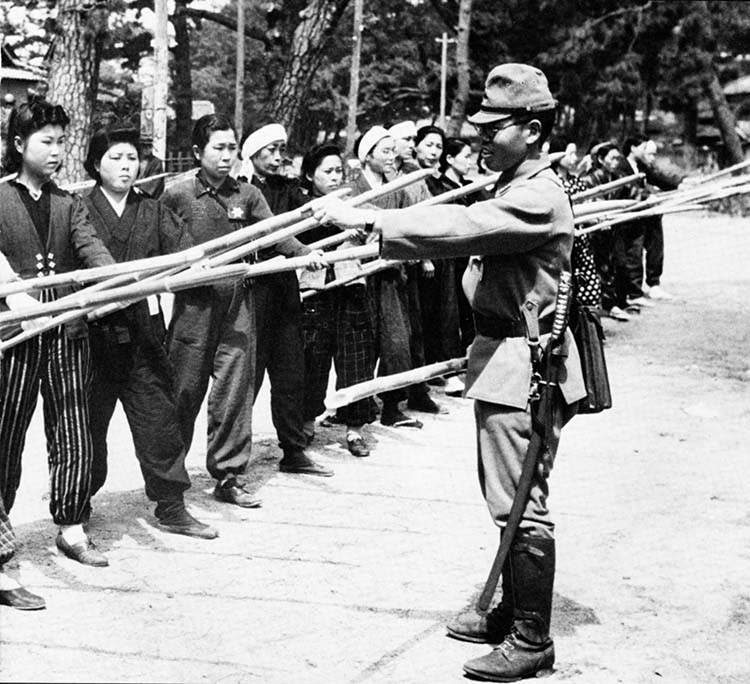
When General Douglas MacArthur’s staff began planning Operation Downfall, a two-pronged invasion of Japan, in the spring of 1945 there were three Japanese divisions and one independent brigade on Kyushu, a total of some 62,000 men. In May, after the surrender of Germany and the Battle of Okinawa, the Japanese high command began reinforcing the large island in anticipation of an invasion. Two divisions were brought out of Manchuria while another came down from Hokkaido, Japan’s northernmost island, and the 40th Army headquarters transferred up from Formosa to take charge of the defense of the western sector of southern Kyushu.
The bulk of the reinforcement consisted of establishing and activating new units using troops already on the island in other capacities supplemented by new recruits and recalled reservists. By the end of the war, Japanese strength on and near Kyushu had increased to 14 divisions, including four in northern Kyushu, plus seven infantry and three tank brigades. An antiaircraft division and two fortification units along with assorted headquarters and a communications brigade completed the forces on Kyushu and nearby islands. Most of these units were activated after May 1945. At the time of the surrender, there were 78,283 men in northern Kyushu who would have been held in reserve and 276,550 in southern Kyushu who were to meet the invading forces—a total of 354,833 men. No further reinforcement before the invasion was expected.
Operation Downfall
Kyushu is a large island nearly 200 miles long with a width ranging from 80 to 120 miles of mostly mountainous terrain. Operation Downfall called for U.S. troops to occupy and secure only a 3,000-square-mile area on the southern end, a mostly rural region separated from the rest of the island by a mountain range spanning the entire width. Sixth Army intelligence reported a total of 735,000 Japanese military personnel from all services on Kyushu and nearby islands (25,000) at the time of the surrender, including some from units that were passing through Kyushu ports in transit to other destinations. The rest were army base and support troops, along with naval and air force personnel and recently mobilized civilian volunteer units.
Japan’s third largest naval base was at Sasebo, but the Japanese navy had all but ceased to exist because of heavy losses and lack of fuel, leaving thousands of shipless sailors to serve in various roles on the island, including manning guns that had been removed from battleships for use as coastal artillery. The numbers of total military personnel were also swelled by the presence of numerous recent naval recruits. While the naval personnel could have been used to fill in the ranks of combat units, most had received little training in ground combat and would have been a stopgap measure rather than an effective fighting force. Plans were made for naval personnel to take over duties from army personnel such as coast watching and manning of fortified positions protecting Kyushu’s harbors, but they had not been implemented by the time of the surrender. Air force personnel consisted of pilots and maintenance and support people for the approximately 800 aircraft that were on the island.
Hundreds of Thousands of “Civilian Volunteers”
A large percentage of the total were base and support troops, along with members of the recently established Peoples Volunteer Fighting Corps who were being used in support roles directing traffic, communications, supply, and transportation, but would have been organized into combat units as the prospect of invasion became more imminent. Although the Sixth Army report gives no estimate, presurrender intelligence reported roughly 140,000 “civilian volunteers” in southern Kyushu and over 400,000 in the north. Their most important role was as human pack mules delivering supplies to combat units because Allied air attack had rendered motorized transportation on the island useless and the Japanese were depending on porters and pack animals as the primary means of transportation. Animals were used to transport supplies to distribution points from which they were delivered to the field by human porters. Japanese officers revealed that the much-touted Home Defense Forces that were supposed to greet the invaders with pitchforks, awls, and wooden pikes had yet to be formed and did not exist on Kyushu.
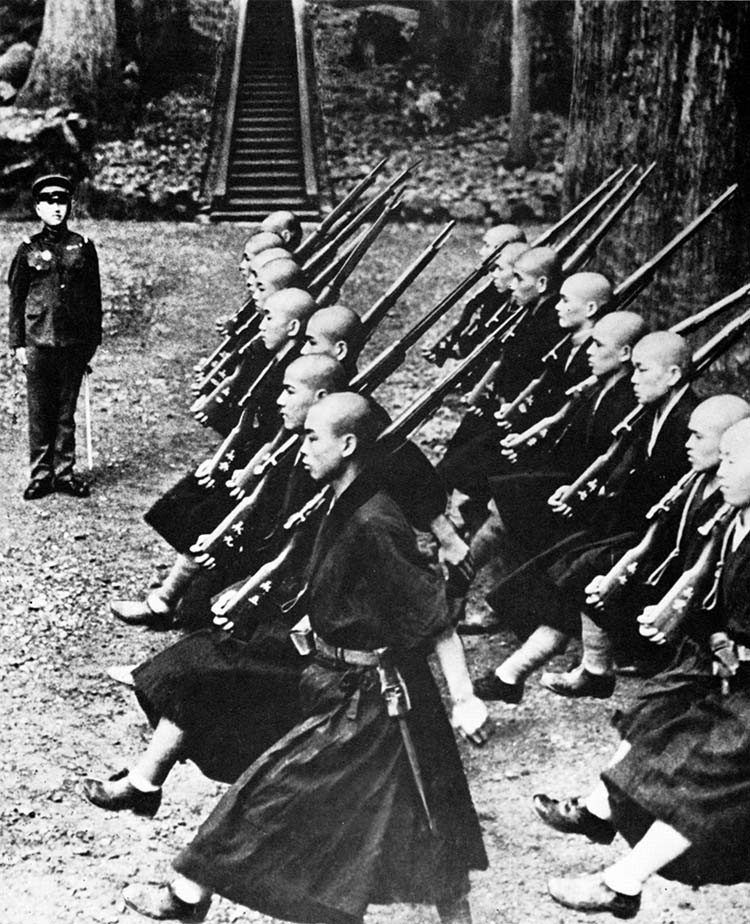
As with the army, Japan’s air forces, both army and naval, were committed overseas at the beginning of the war. Unlike the army, which was built up in the homeland with new recruits, Japan’s air forces were severely depleted as the war continued. While they achieved a reputation of invincibility early in the war, by the end of 1942 they had lost control of the skies and over the next two years became so reduced that when U.S. B-29s commenced operations over Japan from the Marianas in November 1944, the American airmen found themselves opposed by only 375 Japanese fighters. It was not until the commencement of the firebombing raids the following spring that Japan began increasing its home fighter defenses, and even then the increase was minimal. Remarkably, Japanese aircraft manufacturers produced over 28,000 aircraft in 1944 alone, but few remained in Japan, which until November was mostly out of range of Allied bombers. Large numbers were lost in training and ferrying accidents before they even reached the combat zones, and thousands were grounded for lack of fuel and parts.
Human Guided Bombs, Jet-Powered Missiles
When Okinawa fell into Allied hands, the Imperial High Command realized it was just a matter of time before the enemy would be landing in the Home Islands. To combat the threat, they intended to defeat the invading fleet while it was still at sea. Massive use of special attack air units was expected to destroy dozens of troop transports before they reached the vicinity of the landing beaches. An effort was made to convert as many aircraft as possible for special attack or crash-landing use, a conversion that consisted primarily of mounting a bomb. Because of the lack of combat planes, the army and navy turned to the trainers, transports, and other support aircraft that remained in the inventory to increase numbers and guarantee success. New weapons designed for special attack use such as human-guided bombs and rocket- and jet-powered flying bombs were put into development, although they were not produced in large numbers.
It was commonly believed that Japan had thousands—perhaps as many as 10,000—special attack aircraft available to use against an Allied invasion fleet. Such a number was put forth by some Japanese interrogated after the war and was included in monographs published in 1946. It was believed that kamikaze attacks would have started while the invasion fleet was somewhere between Okinawa and Kyushu and would have continued through the landings and against the troops after they were ashore. The Second General Army officers told a different story.
No Plans to use Kamikazes
In answer to the question of how many combat-type aircraft they expected to have available and how they were to be used, they replied that they had 800 bombers and that most would be used in the special attack or crash-landing role against the transports while the invading force was still at sea. They also stated that a reserve of some 70 percent—560 aircraft—would be held on Kanto and in Korea for use against later landings. In short, the Japanese officers revealed that there were fewer than 1,400 airplanes, not 10,000, available for use against an invasion of the Home Islands.
The Japanese indicated that although some aircraft would initially be used as conventional bombers, as the attacks continued they would also be ordered to the crash-landing role. They stated that there were no plans to use kamikazes against troops during and after the landings and that no air support was planned for the ground troops as the supply of aircraft would be exhausted in attacks on the fleet. The officers also responded that there were no jet- powered missile launching sites on Kyushu at the time of the surrender. Ten possible launch sites in northern Kyushu had been surveyed, but construction was never begun. They further revealed that rocket-powered aerial bombs were still in the experimental stage and were not yet in the inventory.
It has often been asserted that the Japanese had hidden thousands of airplanes in underground facilities and caves on Kyushu, but such assertions are not supported by the Second General Army interrogations report. Second General Army officials revealed that 20 airfields on Kyushu were intended for use by the special attack and conventional air units. The airplanes had been dispersed away from the airfields, and as of August 17 when hostilities ceased, U.S. air strikes had not substantially hampered their effectiveness.
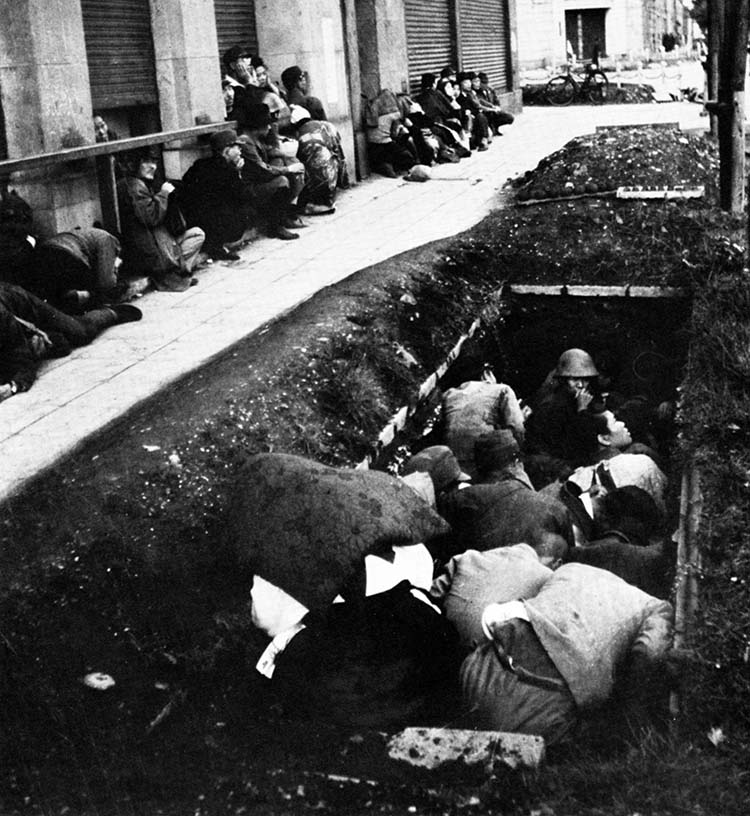
When an invading fleet was detected, the aircraft would be towed to the airfields from their hiding places and sent out in a mass attack. These attacks would continue until the fleet of aircraft had been exhausted. Reportedly, some airplanes were dispersed as far as five miles from the airstrips from which they would be launched.
In response to the question of how much damage they expected the air units to do to the invading force, the Japanese replied, “Ten percent.” Expectations were that more than a third of the aircraft would be intercepted and destroyed before they reached the Allied fleet but that the remnants would be able to inflict enough damage to troop transports to disrupt the landings. Such an expectation was exceedingly optimistic. Only one in nine of the special attack aircraft used during the Battle of Okinawa survived long enough to actually attack a target, and proportionally few of those actually sank a ship. Thirty-six small vessels and destroyers were sunk by kamikaze attack off Okinawa, and 164 ships received damage of varying degrees. With the expected presence of Allied aircraft over Kyushu and the invading fleet in large numbers at the time of the invasion, it is doubtful that even one out of 10 aircraft on the island would have made it to the transports, let alone launched a successful attack.
The military situation at the time of the invasion dictated that Japanese air attacks could have been successful only if they were carried out at night, yet few Japanese pilots in 1945 had the experience for night operations. Those who were rated for night operations were marginally qualified at best. The average Japanese pilot in 1945 had barely 100 hours flying time; pilots in the special attack units had even less. During the battle for Okinawa, Allied fighters were not covering Kyushu, and aircraft could take off and assemble without interference.
The situation had changed by the end of the war. Kyushu was under constant air attack and would have been under an umbrella of U.S. Army and Marine fighters flying from airfields in the Ryukyus prior to and during the invasion, while Navy carrier aircraft would have covered the fleet. Any airplane that took off in daytime would likely have been spotted and shot out of the sky within minutes. Even night take-offs would have been detected by the Northrup P-61 Black Widow night fighters that patrolled the skies over the island during hours of darkness.
By 1945, the Allies had developed effective night fighter capabilities while naval antiaircraft used radar and proximity fuses, which greatly increased the effectiveness of the shipboard guns. Any airplanes that reached the fleet would have been shot down before they struck a target. Without their own radar, it would have been very difficult for any Japanese pilots to spot ships on the surface except during moonlight, and even then they would have a hard time differentiating between a transport and an escorting vessel.
The Japanese would have had difficulty determining whether an approaching fleet was the invasion force or another combat sortie into their waters by the Pacific Fleet. The only means of identifying an invasion fleet was to determine if there were transports involved. By the time of the Japanese surrender, Allied carrier aircraft were operating against targets in Japan almost daily, and surface ships frequently came close enough to land to shell shore installations. The first surface attack was on July 14 when the U.S. Third Fleet shelled a foundry at Kamaishi, and since that time a number of attacks had been carried out.
Ketsu-Go plans called for the Imperial Navy to sortie in force and intercept the invaders, but by August 1945 the navy had ceased to exist. U.S. and British carrier aircraft hit what remained of the Japanese fleet at Kure, and by the end of July had put it completely out of action. A strike by Seventh Air Force B-24 Liberator bombers put a postmark on the fleet’s demise. The Second General Army officers reported that only 12 destroyers and 40 submarines were expected to be available to defend against invasion. The destroyers were to be used to launch 50 “human torpedoes” against the Allied transports as they stood offshore, and the submarines would patrol the waters south and east of Kyushu.
Thirty midget submarines were also to be used against the transports, while 100 small submarines would operate out of the Bungo Straits off northern Kyushu. The destroyers and submarines would have to penetrate a screen of U.S. Navy destroyers and cruisers to get close enough to the transports to do any damage and they would have been subject to air attack both at their shore installations and at sea.
In addition to what remained of the Japanese navy, the army intended to deploy 1,000 small boats, each laden with 550 pounds of explosives, to crash into the sides of the transports. The 40th Army commander revealed that the boats assigned to his sector had yet to arrive in southern Kyushu when the war ended. He also stated that no definite tactics had been developed for their use, but they would probably have been sent out at night. His counterpart with 57th Army stated that the boats in his sector would have been sent out at night in groups of around 30 but did not indicate whether his boats had been delivered when the war ended. In addition to the 10 pecent they expected to destroy by air attack, the Japanese hoped to sink 60 transports with the assortment of surface suicide weapons and submarines.
Several minefields had been established off Kyushu, but the heaviest concentrations were off Nagasaki and other port cities to defend against submarine attack. About 200 mines had been sown off each of the expected Kyushu landing areas, and there were plans to establish extensive minefields off the beaches that had not been carried out when the war ended. No plans had been made to use underwater obstacles to disrupt the landings.
The Japanese had made no plans to use any form of chemical warfare, at least in part due to adverse world opinion and because they knew they could not compete with Allied efforts. Nor were they expecting its use by U.S. forces—with one exception. They were prepared for the use of poison gas against their troops as a desperate measure on the part of the Allies if they were successful in repelling the invaders. At least some of their men had been equipped with gas masks and protective equipment for that eventuality. No preparations had been made to protect the civilian population against such weapons. Japan had a nuclear development program, but all of its components had been destroyed by a B-29 attack. Japan’s nuclear experiments were not a topic of Second General Army interrogation.
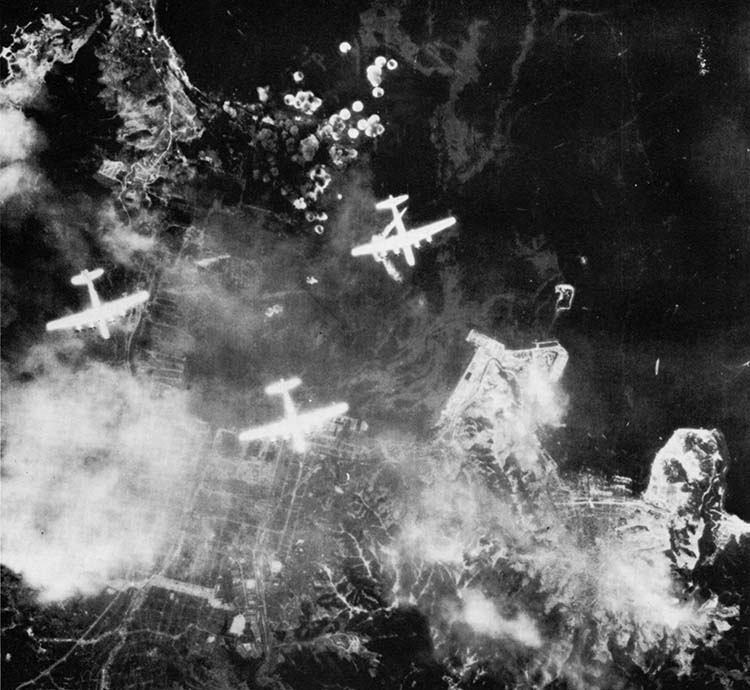
While the main goal of the Ketsu-Go plan was to defeat the invaders while they were still at sea, the defenders knew that thousands of U.S. troops would reach shore. Previously, Japanese commanders had allowed Allied troops to come ashore on Pacific islands essentially unmolested, then launched fierce attacks after they were on land. At Kyushu they intended to defeat the invaders at the water’s edge, and their troops were dispersed with this in mind. They had deduced the general vicinity where U.S. troops were likely to land and had placed defenses accordingly. But they had not determined the exact locations of the landings and, consequently, their defenses were dispersed over a wide area.
One-fifth to one-third of the Japanese troops in southern Kyushu were positioned right on the beaches to oppose the Americans as they came out of their landing craft, with the heaviest concentrations positioned in areas offering little natural concealment. The senior Japanese commanders realized their forces on the beaches would be severely depleted by Allied air attack before the invasion but counted on enough men surviving to successfully combat the landings.
Armament for an infantry battalion consisted of 1,000 rifles, two 70mm guns, 12 heavy machine guns, 31 light machine guns, two 75mm guns, four 37mm antitank guns, and a proportionate number of mortars. Artillery units were given 500 rounds per gun, and troops were issued enough small arms ammunition for “one battle.” Each battalion was expected to fight until death, and no provisions were made for resupply.
The first line of defense would be a thin line of foxholes and machine-gun positions located at the edge of the dunes on the beaches themselves. They would be backed by reinforced positions on higher ground behind them, with the strongest positions to the rear, from which counterattacks would be launched against U.S. troops who reached the beaches. But there were no in-depth defenses, and the Japanese had made no plans for them. Their only strategy was to inflict heavy casualties and keep the enemy troops from establishing a beachhead.
Camps were established primarily in underground bunkers or in natural caves in the limestone and lava predominant in the region. There were plans for tunnels to provide interconnecting positions and allow undetected troop movements, but defensive preparations were in various stages of completion ranging from 60 to 90 percent when the war ended. Reinforced positions were set up in the high ground behind the beaches, the defenses taking advantage of natural caves and rock shelters supplemented by manmade bunkers.
Artillery was important to the Japanese defense plans, but Sixth Army interrogators learned that the senior officers realized what they had was inadequate to accomplish their objective of defeating the invaders on the beaches. Artillery was allocated to the various divisions with no centralized means of concentrating on a specific area. Artillery was not to be used against the amphibious forces until after they were ashore, evidently as a means of conserving ammunition.
Not only were the Japanese short on guns, their plans for the disposition of those they had were lacking; there was no centralized fire control system and communication between units for coordinated fire was practically nonexistent. Their intent was mainly to use artillery as flanking fire on the beaches to cover areas where troop concentrations were sparse. Antiaircraft defenses on Kyushu consisted of only 410 guns of all types, mostly positioned around important facilities and airfields. Due to their small number, no plans had been made for antiaircraft units to be used in the land battle although they were expected to defend themselves if U.S. ground forces approached their positions. Some high-angle naval antiaircraft artillery had been removed from ships and positioned as coastal defense weapons.
Total tank strength in southern Kyushu amounted to 275 vehicles including self-propelled guns, but all were medium to light and no large tanks were believed to be on the island. They would be outmatched by the American Shermans. The principal use of tanks would be on the Miyazaki beaches and in the vicinity of Ariake Bay, working with infantry. The 1st Special Tank Unit, with 27 light tanks, was positioned near Miyakanojo to defend against airborne operations. More than 100 tanks were to be in dug-in positions around Lake Ikeda for use in the antitank role.
The principal means of antitank defense would be with infantry weapons consisting of small bombs mounted on long poles. There was a shortage of bazooka-type antitank weapons, so they were considered as secondary defenses along with tank traps and antitank artillery. No mines had been laid, and although the ground commanders hoped to use them, none appeared to be forthcoming when the war ended. Senior commanders concluded that aerial and naval bombardment would explode most minefields, and the explosives used for them would be put to better use as blasting powder.
Just how effective the Japanese defenses would have been is open to conjecture. Unlike the situations at Iwo Jima and Okinawa where reinforced defenses were set up off the beaches, at Kyushu the main effort was to be on the beaches themselves. Previous strategy was built around concealment and protection from air attack and bombardment during the landings, followed by fierce resistance from reinforced positions as troops moved inland. Japanese troops on both islands had managed to survive long enough to inflict heavy casualties by taking shelter underground. Few troops on Kyushu would have this luxury. The Japanese had adopted a strategy of complete annihilation of the landing forces before they could establish a beachhead, and the troops were positioned at the water’s edge where they would be vulnerable to air attack and naval bombardment.
For the invasion to take place, the Allies would have to have strong land-based air units within striking distance of the beaches, a requirement that was met with the capture of Okinawa and Ie Shima in the Ryukyus. Far East Air Forces, which consisted of the Fifth and Thirteenth Air Forces that had been part of MacArthur’s command and Seventh Air Force from Nimitz’s forces, began moving fighter and bomber squadrons onto Okinawa as soon as the airfields at Kadena and Naha had been secured.
Seventh Air Force fighter-bombers began strikes on Kyushu in May and were joined by Fifth Air Force fighters and B-24s as soon as the squadrons were brought up from the Philippines. Far East Air Forces offered a far more powerful strike force than the single-engine carrier aircraft that had been the mainstay of operations in the Central Pacific. Its fighter groups were equipped with twin-engine Lockheed
P-38 Lightnings, single-engine Republic P-47 Thunderbolts, and North American P-51 Mustangs that doubled as interceptors and fighter- bombers. Heavy bomber groups flew B-24s, while the primary medium bomber was the North American B-25 Mitchell, many of which had been modified as “strafers.” Two B-25 models were equipped with 75mm cannons.
Light bomber squadrons operated Douglas A-20 Havocs, which were also equipped with gun packages in the nose. By 1945, several squadrons had been equipped with the Douglas A-26 Invader, which had been developed as a replacement for both the A-20 and B-25 strafers, and which featured 14 forward-firing 50-caliber machine guns. Marine squadrons flew Chance-Vought F4U Corsairs, Grumman TBF Avengers, and B25s.
The Japanese had deduced the most likely areas where the Allies would land, but their troops were not concentrated exactly at the actual landing points and in some cases were many miles away. Much of the troop strength on southern Kyushu was actually positioned well to the north of the intended landing beaches. The 40th Army, with three divisions and an independent brigade, was responsible for the defense of the southwestern portion of the island. Because of the possibility of landings on the southern end of the Satsuma Peninsula, the 125th Independent Mixed Brigade (7,313 men) was positioned there. The three divisions— 303rd (12,213 men), 206th (21,354 men), and 146th (17,459 men)—were strung out along the southwest coast. A fourth division, the 77th (15,640 men), was held in reserve farther north where it could be ready to move to reinforce either of the two armies. The beaches where the Marines would be landing were in the 206th area.
The 57th Army, with five divisions, two infantry brigades, and two tank brigades, was positioned to defend the east coast and inland portions of the island. The Japanese were expecting the landing at Sumiyoshi, a town several miles north of the actual landing beaches. Three divisions—212th (21,351 men), 154th (17,341 men), and 156th (17,429 men)—were positioned well north of the intended landings south of Miyazaki, with the two southernmost divisions intended to remain static regardless of where the landings took place. Elements of the 212th Division, which was to move to reinforce other units, were actually north of the Allied line of advance.
The 25th Division (25,804 men) was positioned farther inland to defend the Kobayashi Plain against paratroop attack and it was intended primarily to be held in reserve until needed to reinforce the troops on the beaches. Not aware that MacArthur was adamant in his refusal to use paratroopers in the invasion even though the War Department pushed for them, the Japanese kept much of their tank strength and several thousand troops inland to defend against airborne operations on the plains.
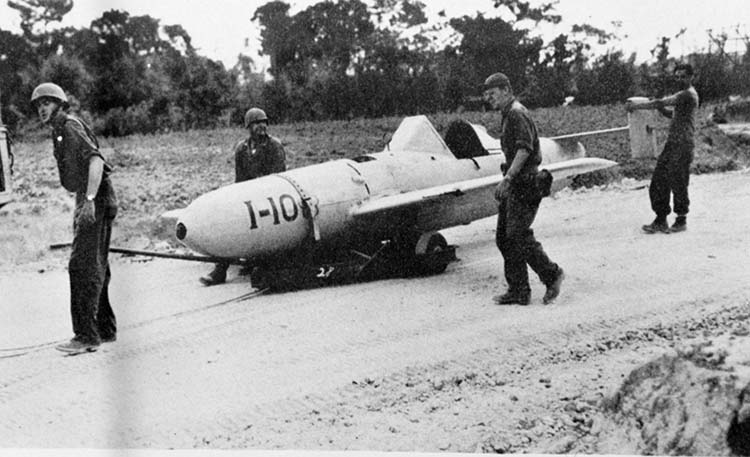
Only the 86th Division (20,614 men) was located within the area of the two planned invasion beaches on the east side of the island. It was positioned behind the head of Arikake Bay, the southernmost of the southeast landing beaches. Japanese defenses at Miyazaki were mostly north of the landing beach, but coastal artillery had been established around Ariake Bay. One of the brigades was actually positioned on an offshore island, while the other was at the head of Kagoshima Bay. The Japanese anticipated simultaneous landings on at least three sites, but were not sure of the actual target. They had also grossly underestimated the size of the U.S. invading force. Consequently, U.S. troops would be numerically superior on each beach.
With the few roads under close watch by Allied aircraft and the railroads already rendered useless, Japanese troop movements would have been difficult if not impossible. As long as they remained concealed, the Japanese troops had some protection against air attack, but once they were on the move they would be easy to spot from the air. Their only reasonably safe avenues would have been along footpaths through the hills under the cover of darkness.
The Ketsu-Go plan called for additional reinforcements to be shipped over from Honshu, but with U.S. ships and submarines operating on the Inland Sea and the sky controlled by U.S. aircraft, it was unlikely many would have been able to get through. The only possibility for reinforcement would have been across the narrow strait that separated the two islands, but even if they managed to reach Kyushu safely, new troops would still be over 150 miles from the invaders—and would be under constant air attack during their journey south.
Construction of a tunnel connecting the two islands had begun in 1937, but the project had been halted when war broke out. The Allies were not aware that construction had been halted, and MacArthur’s staff had developed a plan to seal the tunnel using remote-controlled air/sea rescue boats laden with explosives. The Japanese officers knew that reinforcement was unlikely and their only option was to fight to the death in hopes of preventing the U.S. forces from establishing a beachhead.
Operation Olympic, the plan for invading Kyushu, called for three landings with three divisions each, along with supporting units, at three locations. U.S. Sixth Army troops would land just south of Miyazaki on the east coast and near Koyama on Ariake Bay on the southeast and then drive inland to capture the region around Miyakanojo and southwestward toward Kagoshima Bay.
The V Amphibious Force’s three Marine divisions would land on the southwest side in the vicinity of Kushikino and drive eastward to Kagoshima Bay, a maneuver designed to cut off all Japanese troops to the south of the invasion beaches. A defensive line would be established to the north on a northeast-southwest line to protect the airfields that would be established on the Miyazaki and Miyakanojo Plains.
Each landing force would consist of over 100,000 combat troops along with artillery and tanks. The total strength of the assault force would be more than 424,000 men, with an additional 172,000 as follow-up for a total of 596,000 troops. The Japanese were expecting only 300,000. The total planned strength of the invading force as Olympic was drawn up in May was 766,700 men—including combat engineers, communications and support personnel, and Far East Air Forces personnel—and more than 134,000 vehicles that would move to Kyushu with the air combat groups. The invading force would be equipped with what are called “force-multipliers” in today’s military lexicon in the form of powerful air and artillery components that made it effectively even larger.
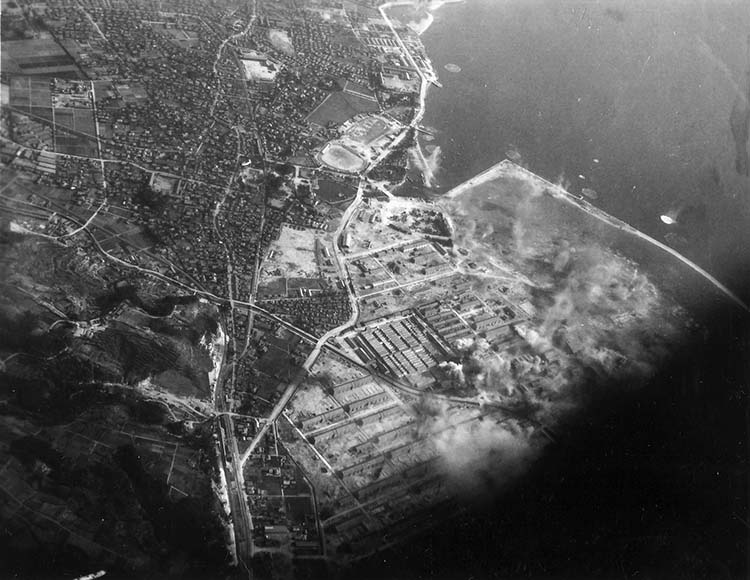
Sixth Army interrogators learned that the Japanese really had no specific plan for a coordinated defense. They had merely deployed their strength in the general vicinity of the expected landings and given the commanders instructions to fight until death. Even so, the 40th Army commanding general had decided that his forces were inadequate to defeat the invaders on the beaches without reinforcement, so he had made plans to withdraw to prepared positions in the hills overlooking them.
There seemed to be no communication between the army and naval and air forces at command levels beneath that of the 16th Area Army headquarters, which was located on the north end of the island nearly 150 miles away. The Japanese ground forces could expect no air support while they were subjected to constant air attack. They would also be under constant bombardment from Pacific Fleet battleships, cruisers, and destroyers operating just offshore. Their only defense against air attack and naval bombardment was to get as close to the U.S. troops as possible in hope that this would reduce the effectiveness of air and naval fire support.
The invading troops would be supported by the most powerful forces yet assembled in the Pacific War. General MacArthur’s staff had taken note of the problems faced by the Marines on Iwo Jima and the Tenth Army on Okinawa and compared them with their own experiences to make air superiority over the invasion area by land-based aircraft a prerequisite for the invasion to take place. General George Kenney, MacArthur’s chief airman, had become convinced early in the war that carrier-based aircraft alone were not adequate to cover a beachhead, and experiences on Iwo Jima and Okinawa had proven him correct.
Initial planning for Olympic called for the assignment of 40 Far East Air Forces combat groups with almost 3,000 bombers and fighters to airfields in the Ryukyus and Bonins with the mission of controlling the skies over southern Kyushu, interrupting enemy surface transportation, and destroying ground defenses in advance of the invasion, then providing support for ground forces. Ten additional groups had been added to the plan by July. As soon as airstrips could be prepared, some fighter squadrons and light and medium bomber squadrons would move northward to Kyushu.
Additional land-based air power would be provided by Twentieth Air Force, the command organization for the B-29s, which was an independent unit under the direct command of Army Air Forces chief General Henry “Hap” Arnold in Washington and was not counted as part of the invading force. By mid-1945 there were already more than a thousand B-29s operating from bases in the Marianas, and Lt. Gen. James H. Doolittle’s Eighth Air Force was setting up shop on Okinawa with more of them.
The mission of the B-29s was to maintain pressure on Japanese industry and other strategic targets, although they could be used against defenses on Kyushu if needed. Such a need would have been unlikely since Far East Air Forces had several heavy bomber groups equipped with B-24s in the Ryukyu and Bonin Islands. Far East Air Forces also had its own heavy bombers because two squadrons of Consolidated B-32s were forming in the Philippines. Additional air striking power would be provided by the air groups on the carriers of the U.S. Pacific Fleet, with more than 1,900 aircraft expected to be in Japanese waters by the time of the invasion. Far East Air Forces and U.S. Pacific Fleet air power alone amounted to nearly 5,000 combat aircraft—and this did not include the B-29s. In addition, Britain’s Royal Air Force had agreed to deploy 10 bomber squadrons to Okinawa to support the invasion, and an additional 10 squadrons were in the works.
The U.S. Joint Chiefs of Staff planned for air power to drop more bombs on Japan before the invasion than had been dropped on Germany during the entire course of the war. Far East Air Forces fighter bombers began operating over Kyushu in May, shortly after they moved into airfields on Ie Shima, and the intensity of their attacks rapidly increased as more squadrons arrived in the Ryukyus. The P-38s, P-47s, and P-51s shot up basically everything that moved. They were joined in their low-altitude attacks by A-26 and B-25 strafers. Far East Air Forces A-20s were preparing to move to Okinawa when the war came to an end. Four-engine B-24s struck railroad marshaling yards, port facilities, and other strategic targets on Kyushu, while B-25s concentrated on bridges, railroad trestles, and tunnels.
When Japan announced that all able-bodied men and women were part of the homeland defense, Fifth Air Force adopted the attitude that there were no more civilians in Japan. By August 4, two days before the mushroom cloud appeared over Hiroshima, the air attacks had become so intense that Fifth Air Force fighter pilots came back from a sweep over Kyushu to report that civilians were waving white flags all over the island. It was just the beginning. During the last weeks prior to D-day, strikes on Japanese defenses in southern Kyushu would intensify.
The invaders would also be supported by the entire U.S. Pacific Fleet. Throughout the war, the U.S. Navy used its older battleships to support amphibious operations, and even if the ships were old, some were equipped with huge 16-inch guns that could hurl a 2,700-pound projectile over 25 miles. Even the oldest ships carried 14-inch guns that fired 1,400-pound projectiles. Either gun could knock out a bunker complex with one salvo. Cruisers and destroyers carried smaller artillery, but were still capable of directing a tremendous amount of firepower against positions ashore. The naval force that would assemble to support the landings would be the largest yet seen in the war.
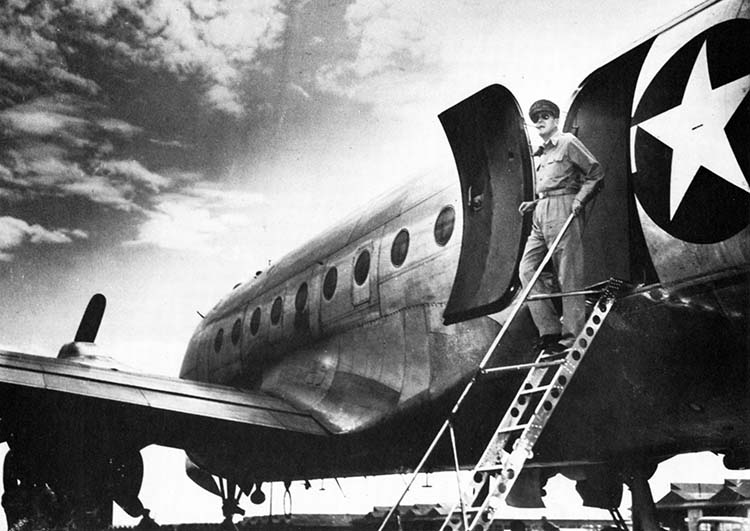
Had the invasion actually taken place, there can be no doubt that the Japanese would have fought fiercely and casualties among the landing troops could have been heavy during the initial assault. But the Sixth Army report indicates that the Japanese defenses were weaker than has been advocated and were not well organized. The U.S. Joint Chiefs of Staff advised President Truman that there was no way to determine an exact figure, but gave a rough estimate of some 40,000 killed in action on Kyushu.
By mid-July, the Joint Chiefs and MacArthur’s staff had come to realize that an armed invasion was never going to take place and began making plans to carry out the Operation Blacklist plan that had been drawn up for a peaceful occupation of Japan. Preparations were put in motion in early August for the Far East Air Forces Troop Carrier Command and the Pacific Air Transport Command to prepare to transport the 11th Airborne and 27th Infantry Divisions to Japan to begin the occupation.
On August 15, Japan’s acceptance of surrender terms allowing Emperor Hirohito to keep his throne but mandating a U.S. occupation of the country was received in Washington, D.C. Ten days later, two Fifth Air Force P-38 pilots, Colonel Clay Tice, commander of the 49th Fighter Group, and his wingman, Flight Officer Hall, landed at Nittagahara airfield on Kyushu, claiming they were low on fuel. A B-17 equipped for air/sea rescue landed a few minutes later. The airmen were greeted in a friendly manner by Japanese soldiers, who provided pumps and hoses to transfer fuel from the B-17 to the fighters.
A professional pilot, author Sam McGowan is a frequent contributor to WWII History. He resides in Missouri City, Texas.
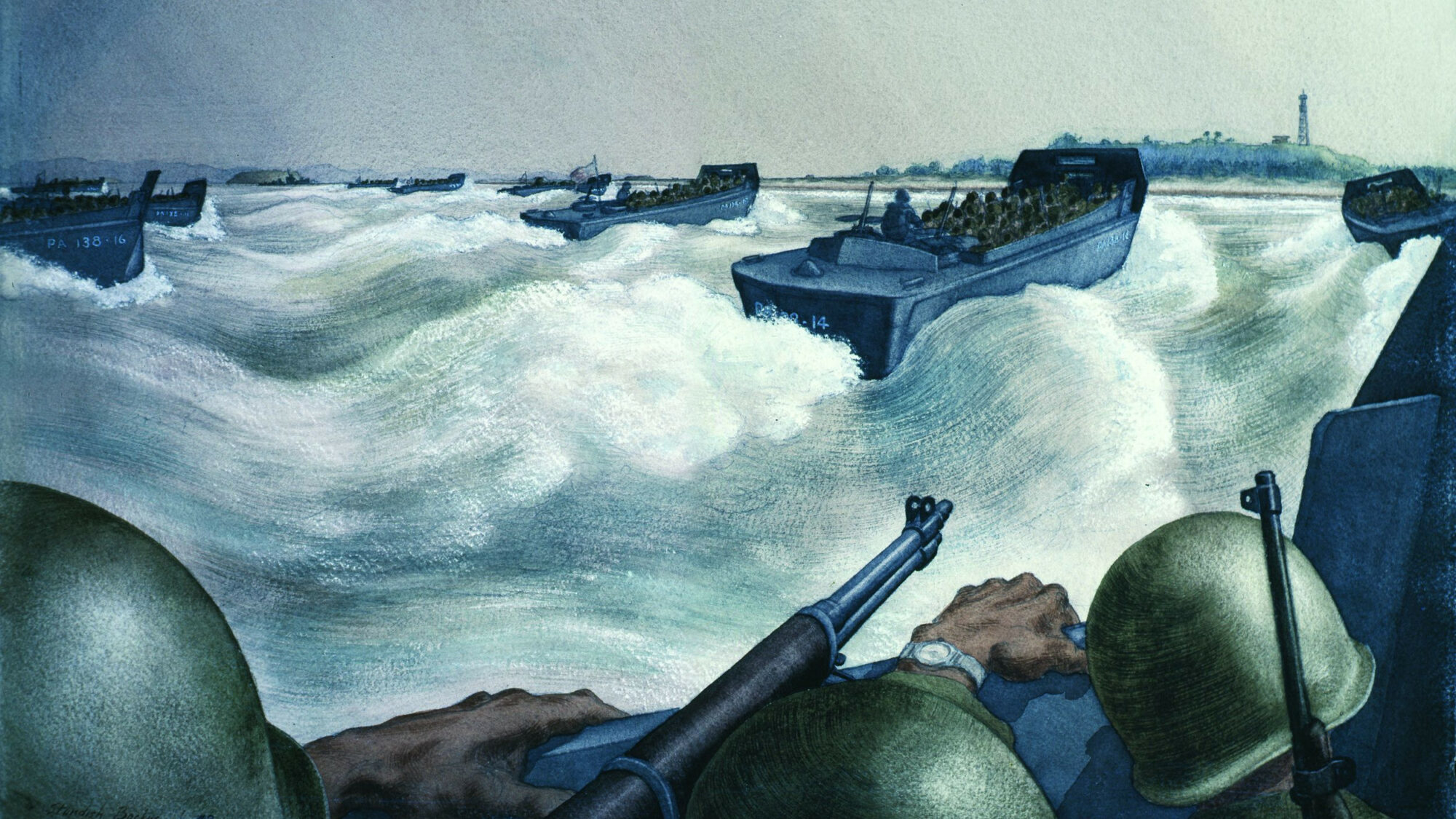
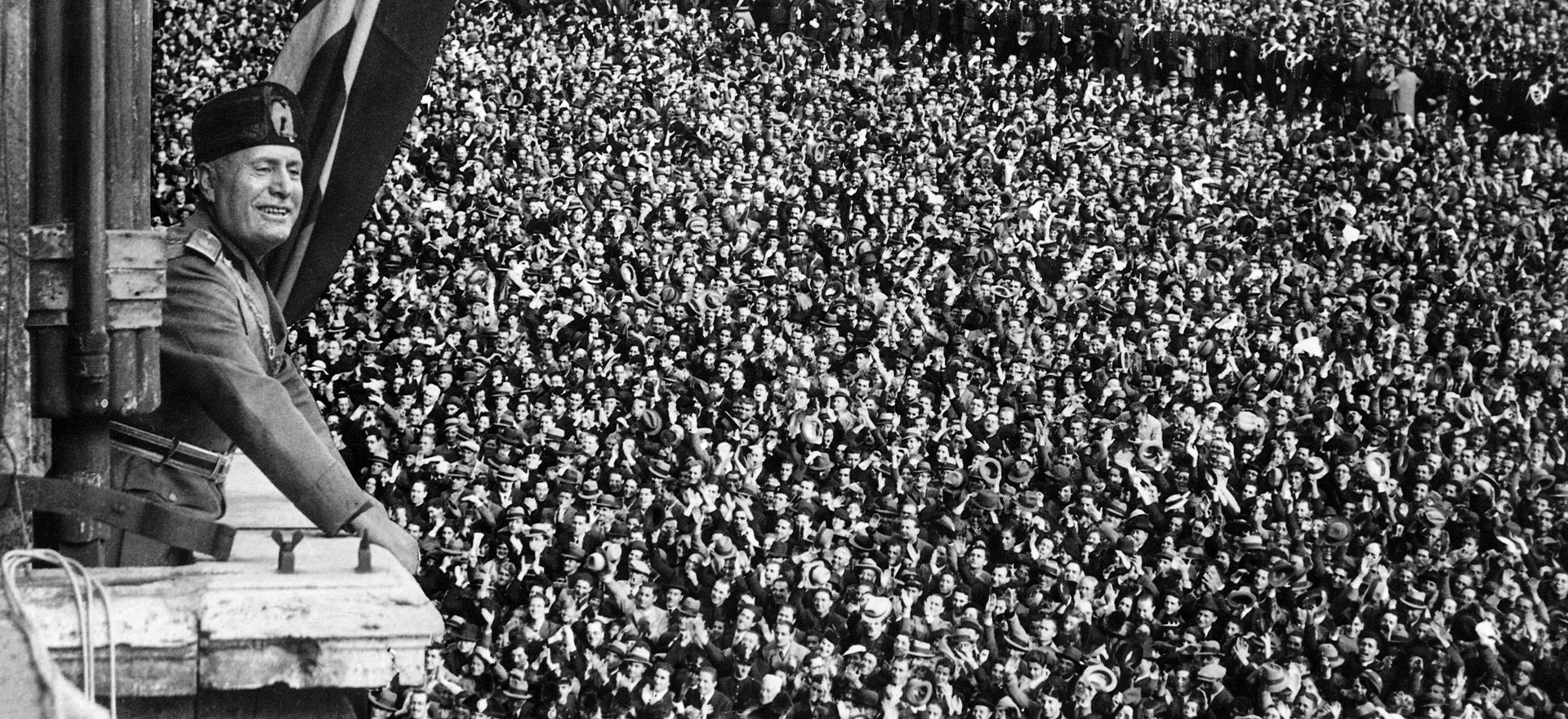
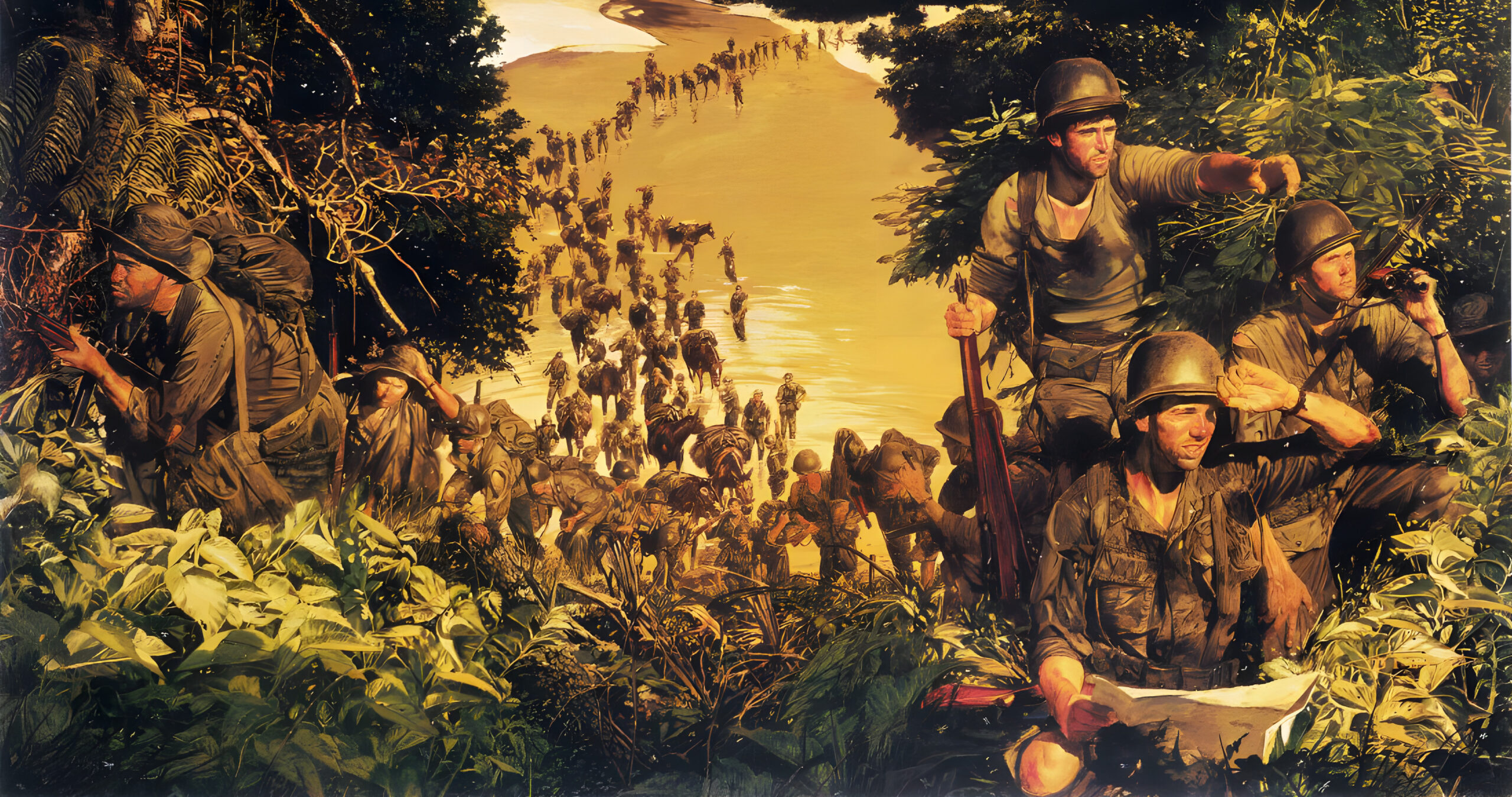
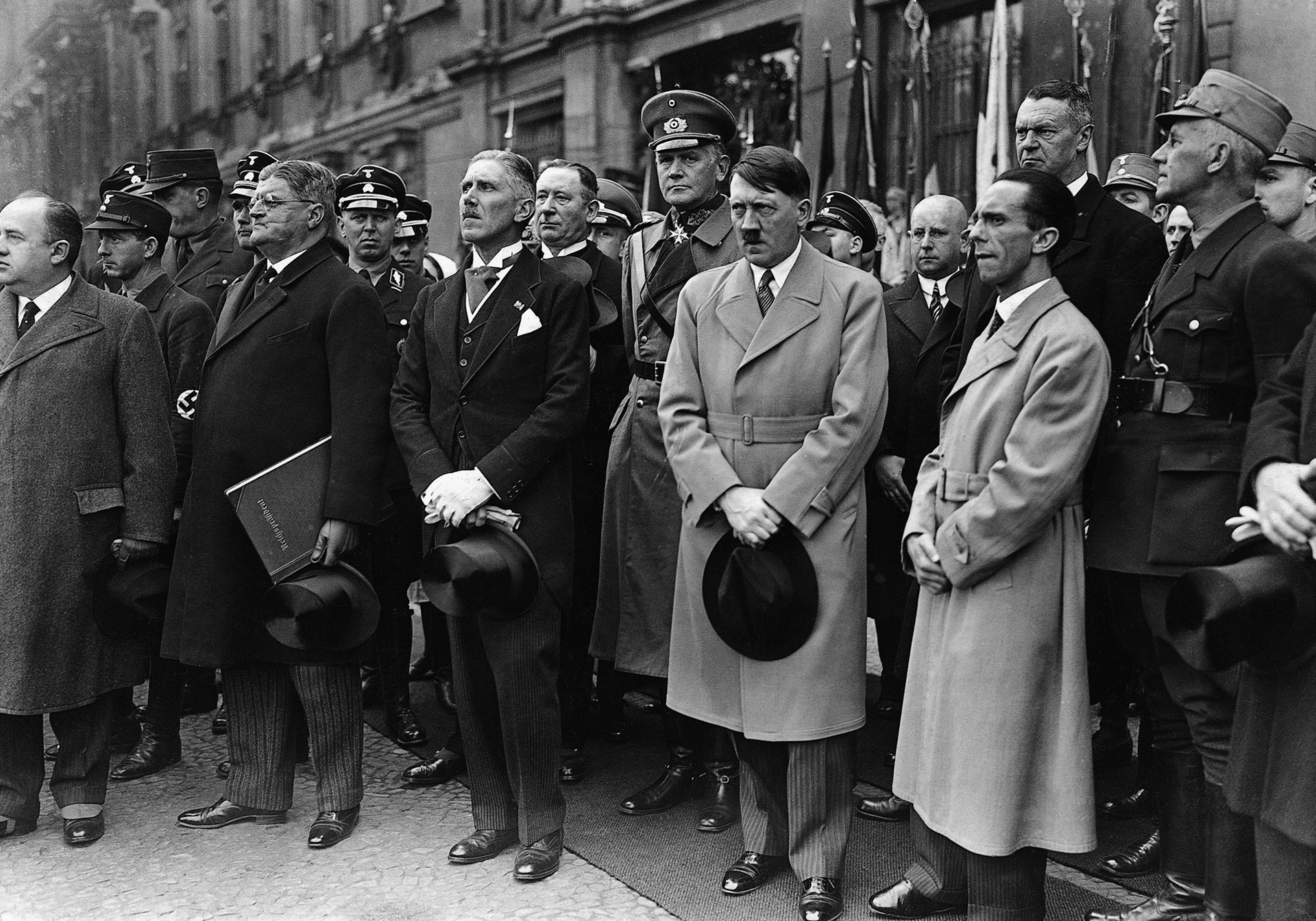
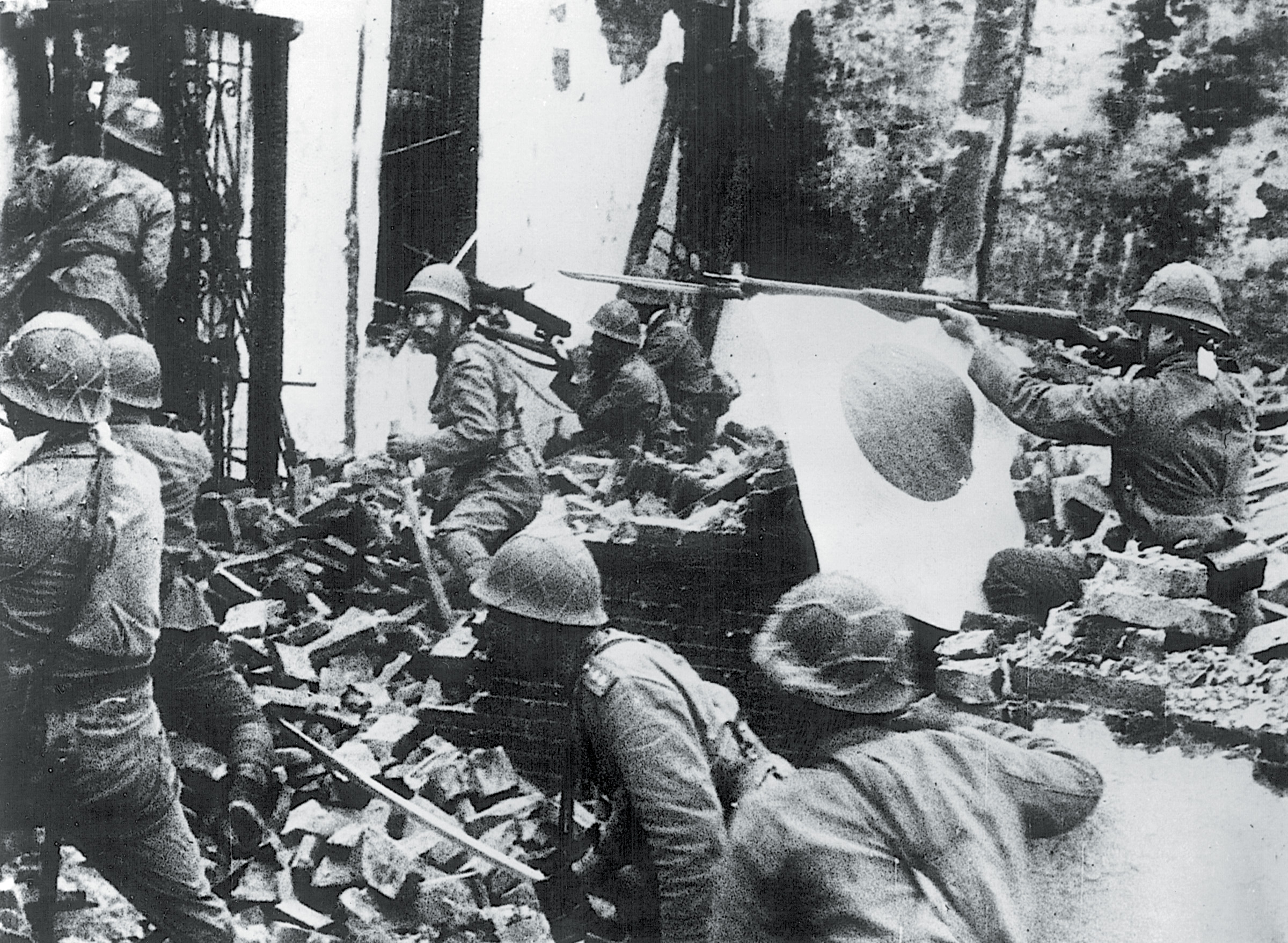
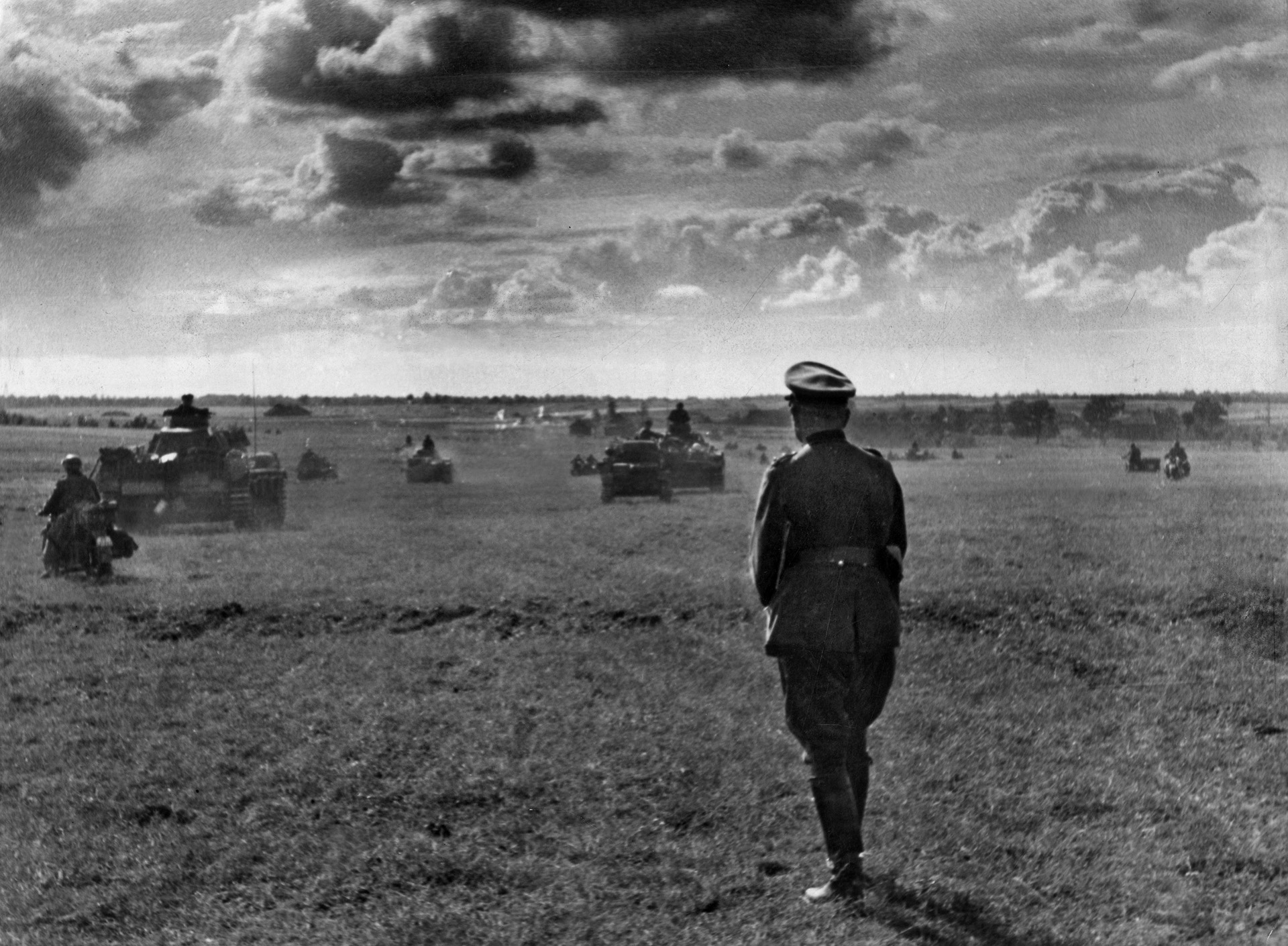
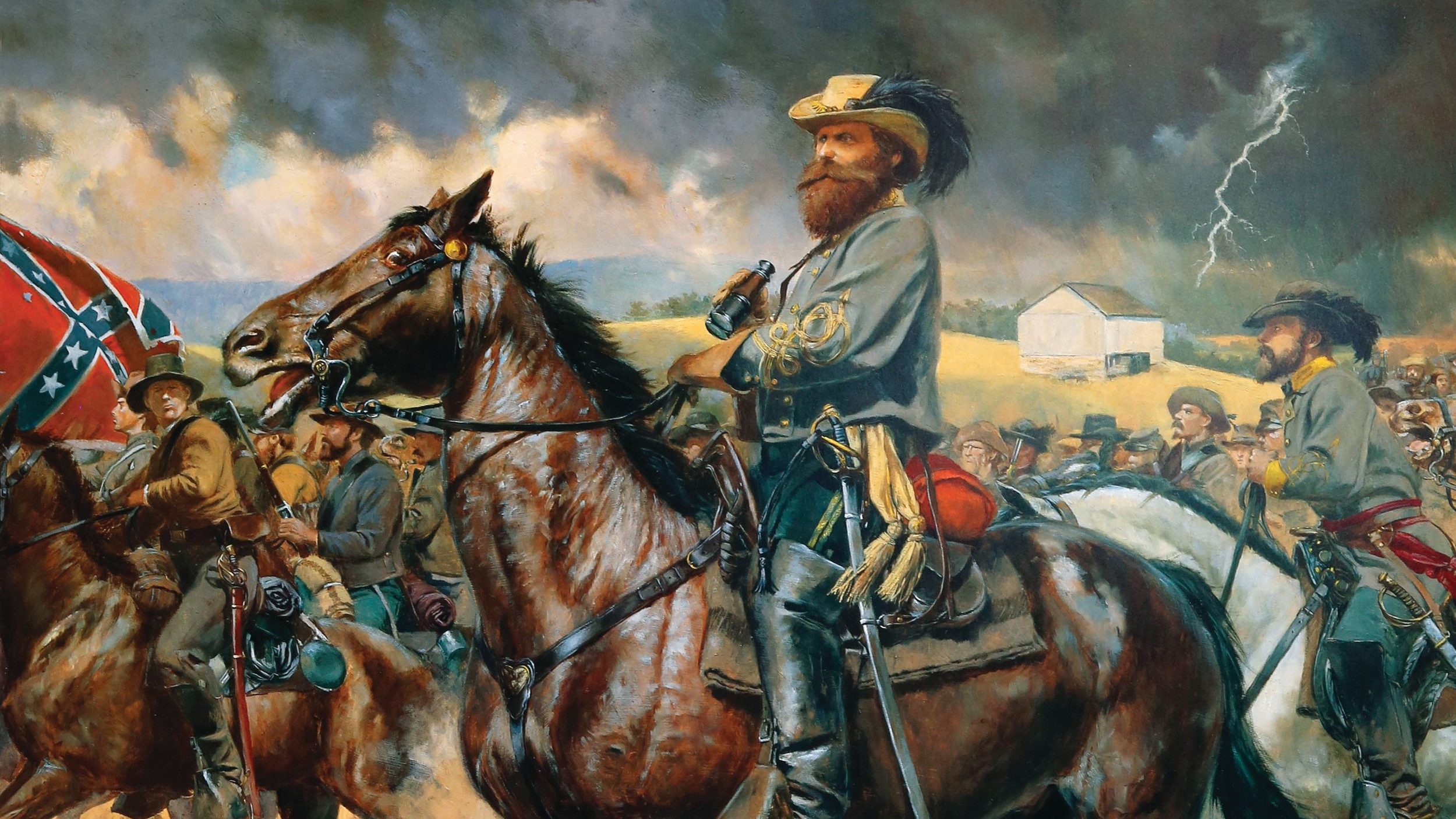
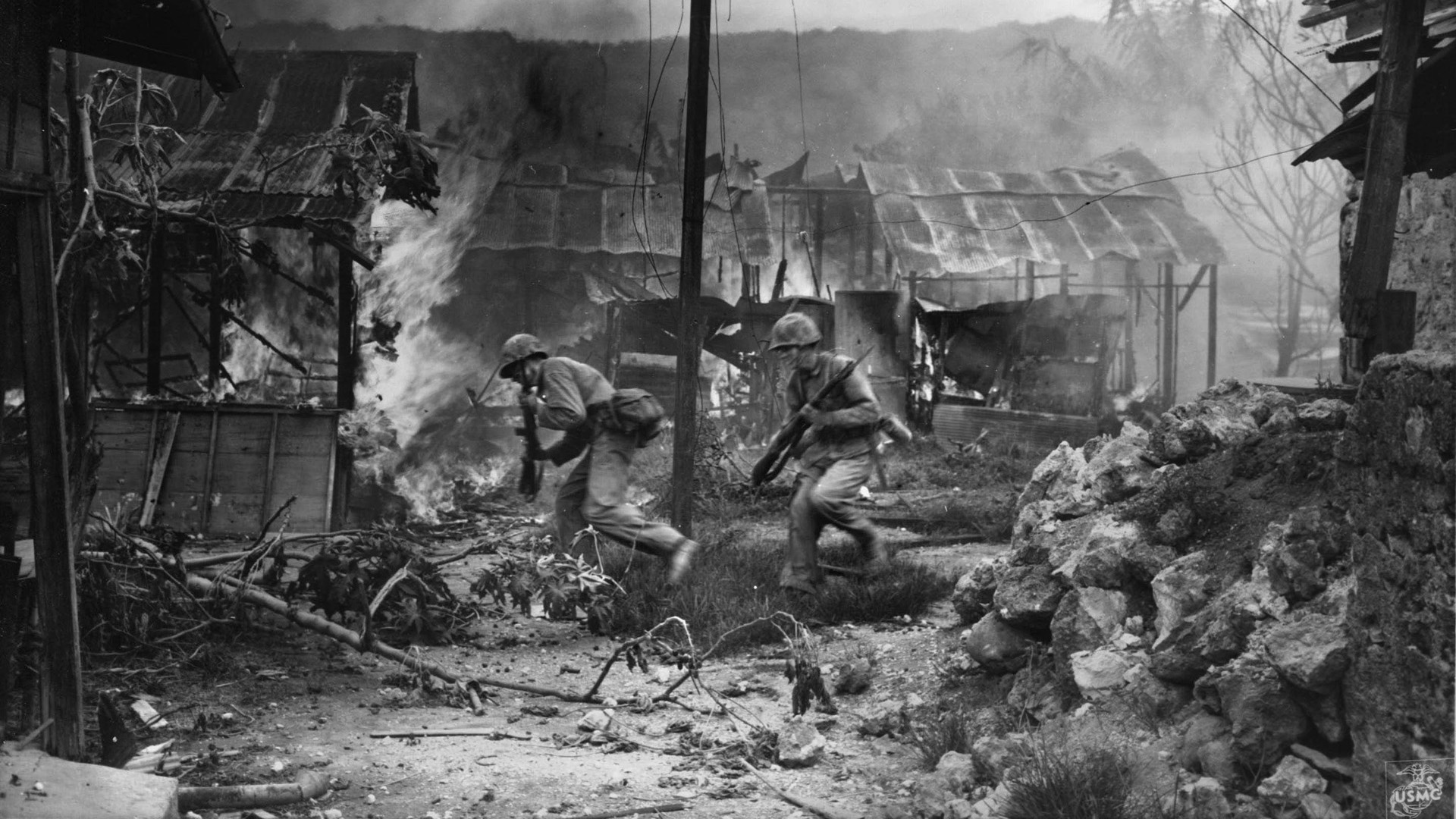
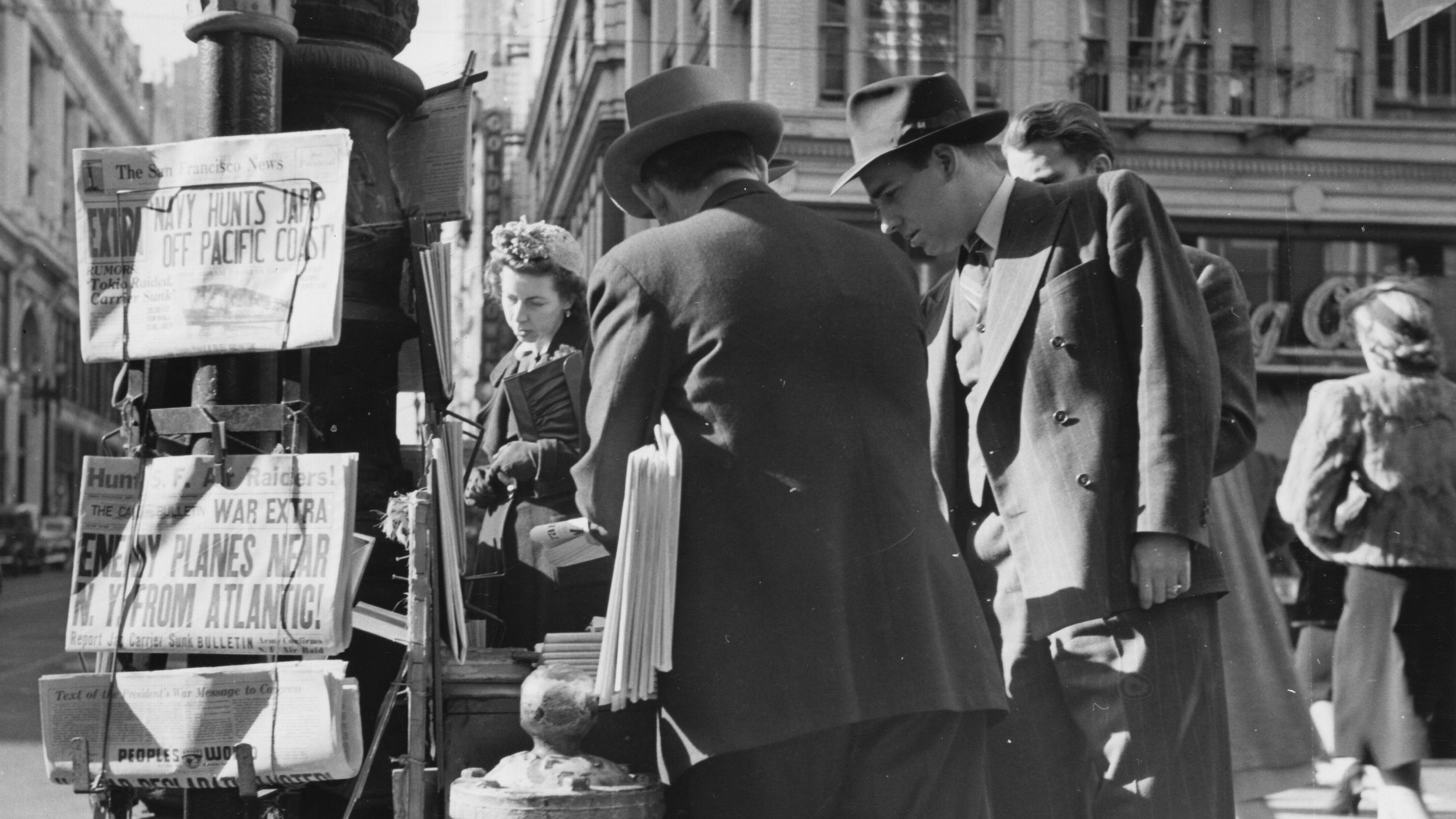
Not mentioned was the always possibility of a Soviet invasion of the Northern islands despite Stalin’s statement of neutrality. In fact, after Hiroshima the Soviets invaded Manchuria and some islands off Hokaido. It was never Stalin’s plan to expend a large troop commitment in Asia as his primary objective was control of Eastern Europe. His support of the US by the late invasion in Asia was directed at insuring a Communist government in China and Korea to cover his Eastern flank. As it turned out, Stalin was able to achieve both his European and Asian objectives thanks to the early surrender of Japan.
MAPS please.
The map of the invasion plan is nice. Where is the map of the Japanese forces? Trying to picture things from the paragraphs is difficult and confusing.
I read a book a few years ago detailing the proposed invasion of Japan. This always pre-supposes that we did not use the atomic bombs. However one person, General Marshall, wanted to use the bombs tactically and bomb Kyushu prior to landing. Can you imagine our casualties from radiation had we landed right after an atomic bomb explosion or two or three. It is believed we would have had 9 atomic bombs built by October.